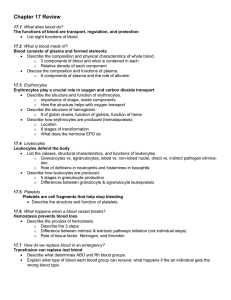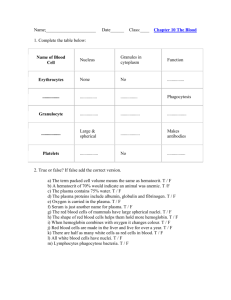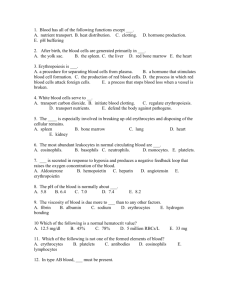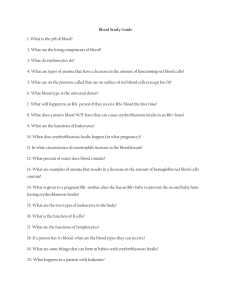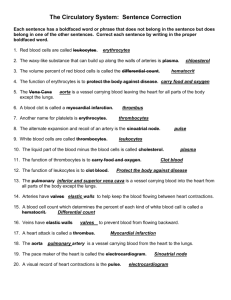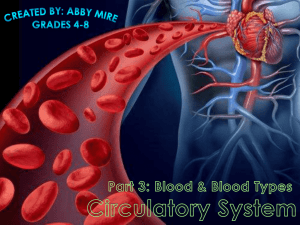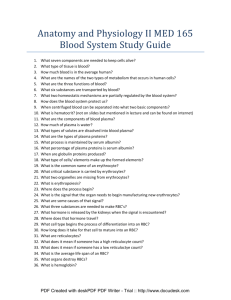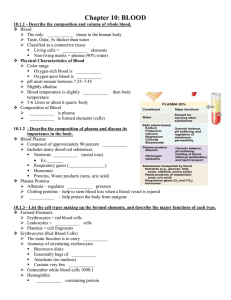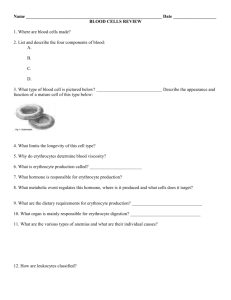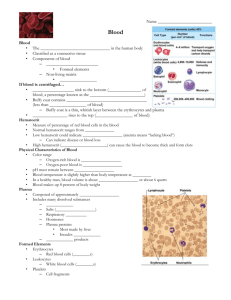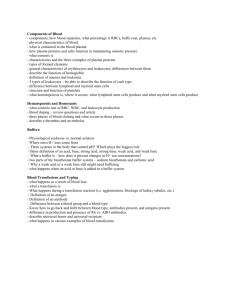Review /Objectives
advertisement
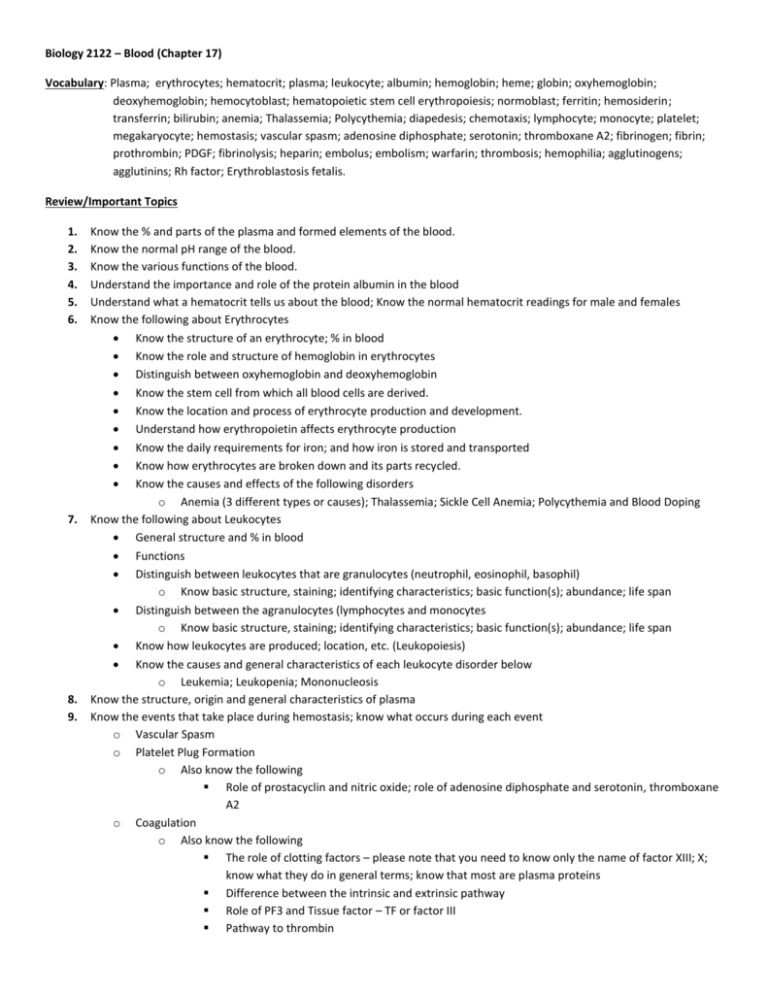
Biology 2122 – Blood (Chapter 17) Vocabulary: Plasma; erythrocytes; hematocrit; plasma; leukocyte; albumin; hemoglobin; heme; globin; oxyhemoglobin; deoxyhemoglobin; hemocytoblast; hematopoietic stem cell erythropoiesis; normoblast; ferritin; hemosiderin; transferrin; bilirubin; anemia; Thalassemia; Polycythemia; diapedesis; chemotaxis; lymphocyte; monocyte; platelet; megakaryocyte; hemostasis; vascular spasm; adenosine diphosphate; serotonin; thromboxane A2; fibrinogen; fibrin; prothrombin; PDGF; fibrinolysis; heparin; embolus; embolism; warfarin; thrombosis; hemophilia; agglutinogens; agglutinins; Rh factor; Erythroblastosis fetalis. Review/Important Topics 1. 2. 3. 4. 5. 6. 7. 8. 9. Know the % and parts of the plasma and formed elements of the blood. Know the normal pH range of the blood. Know the various functions of the blood. Understand the importance and role of the protein albumin in the blood Understand what a hematocrit tells us about the blood; Know the normal hematocrit readings for male and females Know the following about Erythrocytes Know the structure of an erythrocyte; % in blood Know the role and structure of hemoglobin in erythrocytes Distinguish between oxyhemoglobin and deoxyhemoglobin Know the stem cell from which all blood cells are derived. Know the location and process of erythrocyte production and development. Understand how erythropoietin affects erythrocyte production Know the daily requirements for iron; and how iron is stored and transported Know how erythrocytes are broken down and its parts recycled. Know the causes and effects of the following disorders o Anemia (3 different types or causes); Thalassemia; Sickle Cell Anemia; Polycythemia and Blood Doping Know the following about Leukocytes General structure and % in blood Functions Distinguish between leukocytes that are granulocytes (neutrophil, eosinophil, basophil) o Know basic structure, staining; identifying characteristics; basic function(s); abundance; life span Distinguish between the agranulocytes (lymphocytes and monocytes o Know basic structure, staining; identifying characteristics; basic function(s); abundance; life span Know how leukocytes are produced; location, etc. (Leukopoiesis) Know the causes and general characteristics of each leukocyte disorder below o Leukemia; Leukopenia; Mononucleosis Know the structure, origin and general characteristics of plasma Know the events that take place during hemostasis; know what occurs during each event o Vascular Spasm o Platelet Plug Formation o Also know the following Role of prostacyclin and nitric oxide; role of adenosine diphosphate and serotonin, thromboxane A2 o Coagulation o Also know the following The role of clotting factors – please note that you need to know only the name of factor XIII; X; know what they do in general terms; know that most are plasma proteins Difference between the intrinsic and extrinsic pathway Role of PF3 and Tissue factor – TF or factor III Pathway to thrombin 10. 11. 12. 13. 14. 15. 16. Differences between fibrinogen and fibrin Role of the anticoagulants Know the role of PDGF in clot retraction and repair; how clot retraction and repair take place. Know what fibrinolysis is and the roles of the chemicals plasmin and tPA in busting clots Compare a thrombosis, embolus and embolism. o Know the role of warfarin or Coumandin and Asprin in treating these disorders Know the causes and characteristics of Hemophilia Know the following about the ABO blood groups o Structural differences; percentage and frequency in US population Know what an Rh factor is Know the causes and effects of Erythroblastosis fetalis
